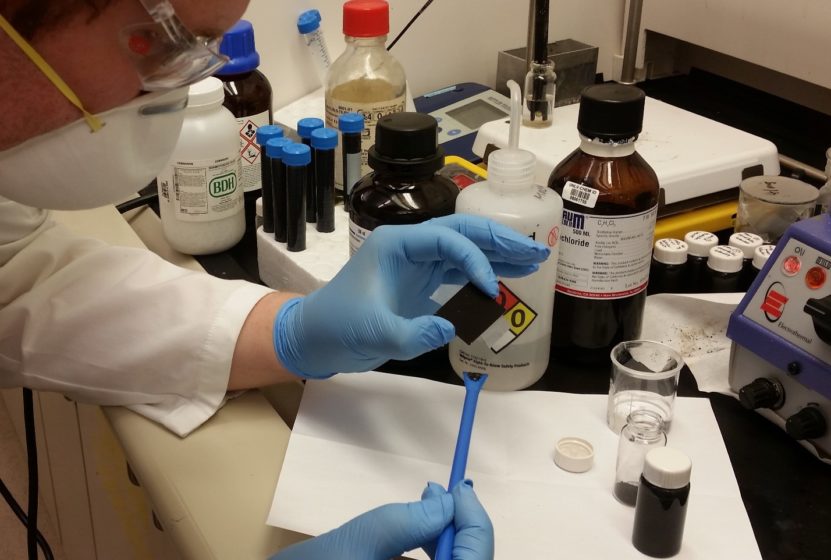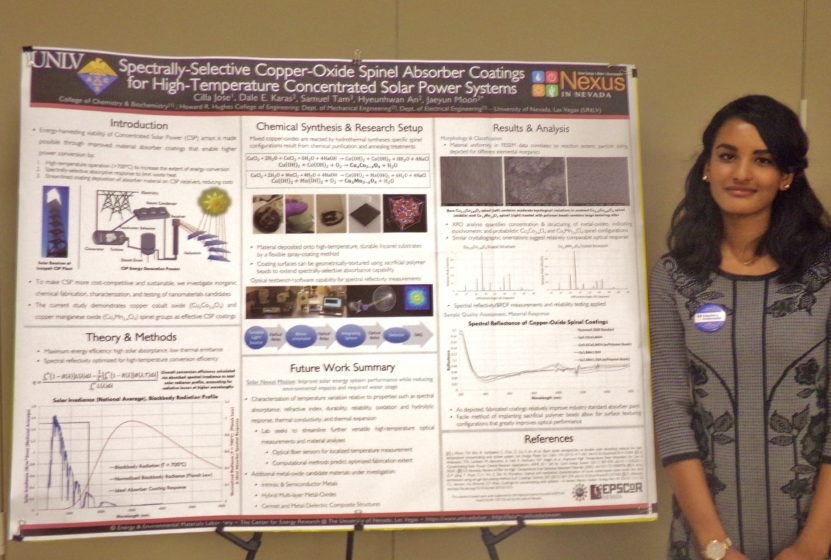Graduate student researcher Dale E. Karas qualitatively compares coated substrates to precursor nano-powders.
–C. Jose Photo
Boosting the Efficiency of Concentrated Solar Power Systems
NEXUS scientists develop new nanomaterial coatings to help absorb and reflect the sun’s rays
By Jane Palmer
May 2017
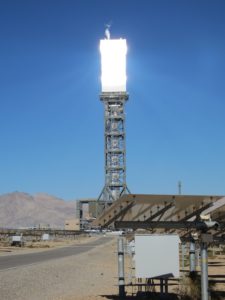
For a CSP system such as the Ivanpah Solar Plant, a mirror array collectively concentrates the Sun’s energy onto a large receiver system that operates at extremely high temperatures. –E. Marti Photo
Many CSP research design models involve a complex array of mirrors, a solar receiver and a power block. The mirrors direct and focus incident sunlight onto a solar receiver, which consists of an array of metal tubes coated with light absorbing materials. Once this solar heat is collected by the receivers a heat transfer fluid flowing along the tube transfers it to a large tank containing molten salts. This tank “contains” the thermal energy, which is then used to drive traditional steam turbines or engines that create electricity.
Microscopic Solar Receiver Coatings
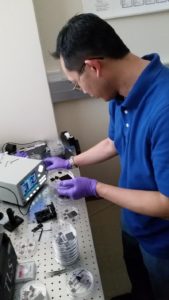
Undergraduate student researcher Samuel Tam prepares samples for spectral absorptivity measurements. –D. Karas Photo
The team’s goal is to create materials that will optimize the ability to absorb the sun’s rays while minimizing heat loss. To this end, Dr. Moon has investigated the use of special types of nanomaterials that are assembled at elevated temperature and vapor pressures. Under these extreme conditions the scientists can exert precise control over the way that these materials crystalize and structure themselves.
Simulating Science
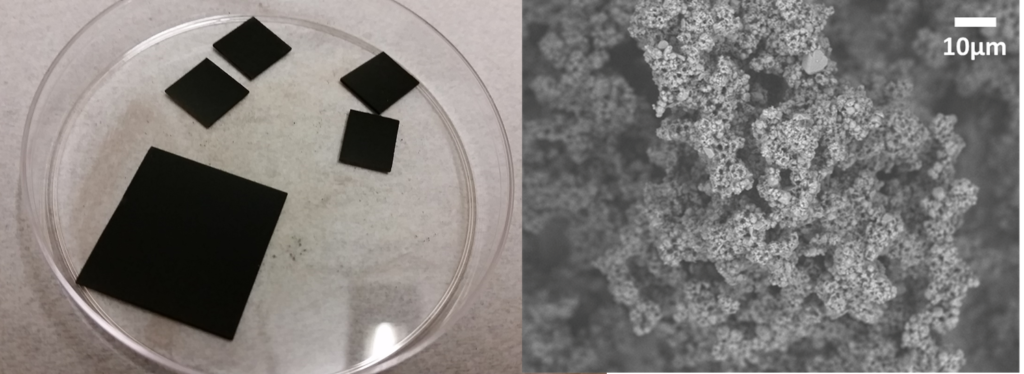
The completed synthesis produces solar absorber coating materials onto testable substrates – these mimic their deposition onto a large CSP receiver system (Left). Scanning electron microscopy image of the absorber coating (Right) –D. Karas Photo
Creating the foundation for solar energy research
 Jaeyun Moon is one of five new faculty hires funded by the NEXUS project. The objective in supporting such positions is to develop expertise within the Nevada System of Higher Education to investigate the confluence of renewable energy, water and the environment and help further the economic development, workforce development and education relating to solar power in the state.
Jaeyun Moon is one of five new faculty hires funded by the NEXUS project. The objective in supporting such positions is to develop expertise within the Nevada System of Higher Education to investigate the confluence of renewable energy, water and the environment and help further the economic development, workforce development and education relating to solar power in the state._______________________________________

NEXUS Notes is a monthly publication of the Solar Nexus Project, which is a five-year research project funded by the National Science Foundation’s Established Program to Stimulate Competitive Research “EPSCoR” (Cooperative Agreement #IIA-1301726) focusing on the nexus of (or linkage between) solar energy generation and Nevada’s limited water resources and fragile environment.
Any opinions, findings, and conclusions or recommendations expressed in this material are those of the author(s) and do not necessarily reflect the views of the National Science Foundation.
_______________________________________
If you would like to know more about the NEXUS project,
please contact, Dr. Gayle Dana
Gayle.Dana@dri.edu
530-414-3170
_______________________________________



